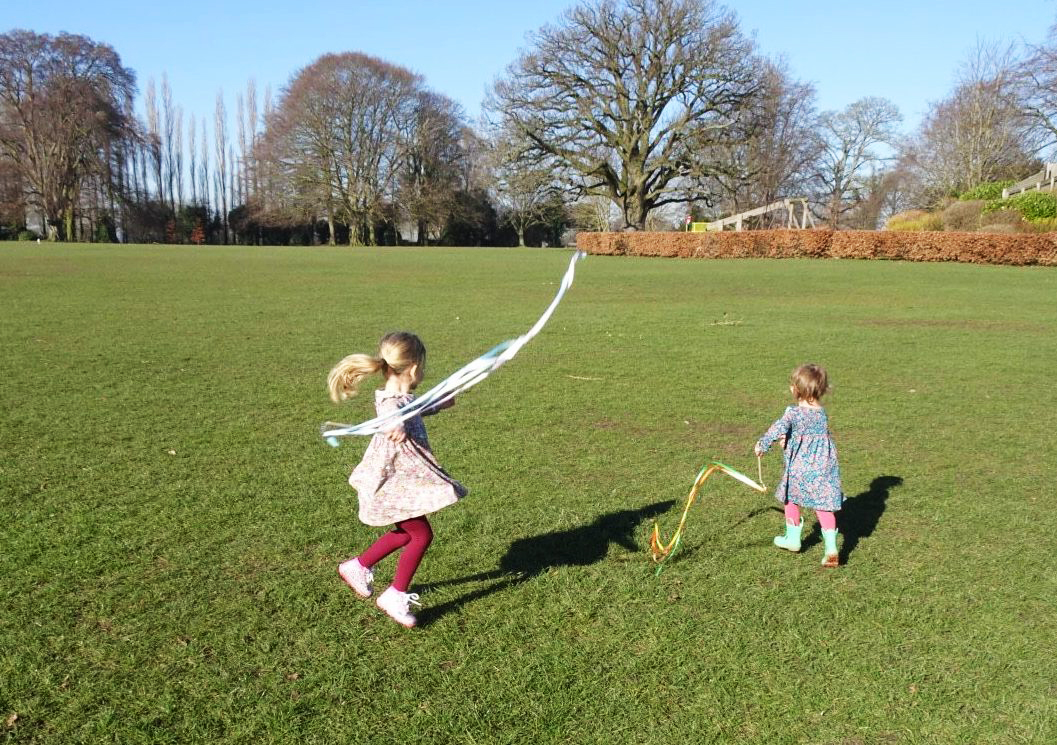
Music is the movement of sound to reach the soul for the education of its virtue.
– Plato
Music and movement. You can’t have one without the other. They are one and the same. Musicians move to create the music they are creating. Have you ever watched a violinist on stage? Their whole body moves, as if they are adding their movement into their music. Wassily Kandinsky (Russian painter and art theorist, 1866-1944) saw music with colours and his paintings show the the sound of music made visible through the movement of paint across a canvas.
Music is the ultimate teacher.
– Wassily Kandinsky
Music evokes movement from us. It draws out all sorts of emotions and can make our bodies want to move, even if we don’t want them to! It could be through dance, through singing, painting, playing an instrument or even running. For many watching a ballet or opera can bring uncontrollable and overwhelming waves of emotion. The beauty of the dance married with the beauty of the music results in perfect harmony.
The dance can reveal everything mysterious that is hidden in music, and it has the additional merit of being human and palpable. Dancing is poetry with arms and legs.
– Charles Baudelaire
Music has the ability to guide our moods. Some styles elevating and others leading to melancholy. It is no surprise then that if music and movement has such an effect on adults, that much scientific research has gone into the relationship and effects it can have in child development.
Music and children have a close relationship. As soon as a baby is born, lullabies are softly sung to them. During those long days and nights of fourth trimester newborn life, these songs for many babies (and exhausted parents!) soothe and reassure them in the new world they have emerged into. Ask any parent and you’ll find each can quickly name a song that had a calming effect on their babies. These songs can calm a tired baby or child, stop hysteria in its tracks and even act as a signal that it’s time to go to sleep. Powerful stuff!
There is much research that suggests the introduction the listening, playing and interaction with music at an early age improves brain development. Studies showed that if parents take their babies to interactive music classes they find that the rhythmic patterns within the music are like those in how we speak. Our inclinations when we speak help babies to identify different speech sounds when they are learning how to speak. This carries on all the way up to children learning to read, with teachers singing the ABC alphabet song and making up ditties for children to remember letters when doing phonics learning. I can’t see an ant these days without hearing and seeing in my head the song and actions my eldest learnt at school for remembering A. “a, a, ants on my arm, a, a, ants on my arm.”
Our children being actively in contact with music can lead to an improvement in lingual skills and from there to literary skills also. A child that is learning different nursery rhymes within a group context, will not only be developing their memories in storing information but also learning new words. For example the nursery rhyme – Heads, shoulders, knees and toes. Within no time at all, your child will be naming parts of their bodies. From there we move on to literacy and then on to listening skills.
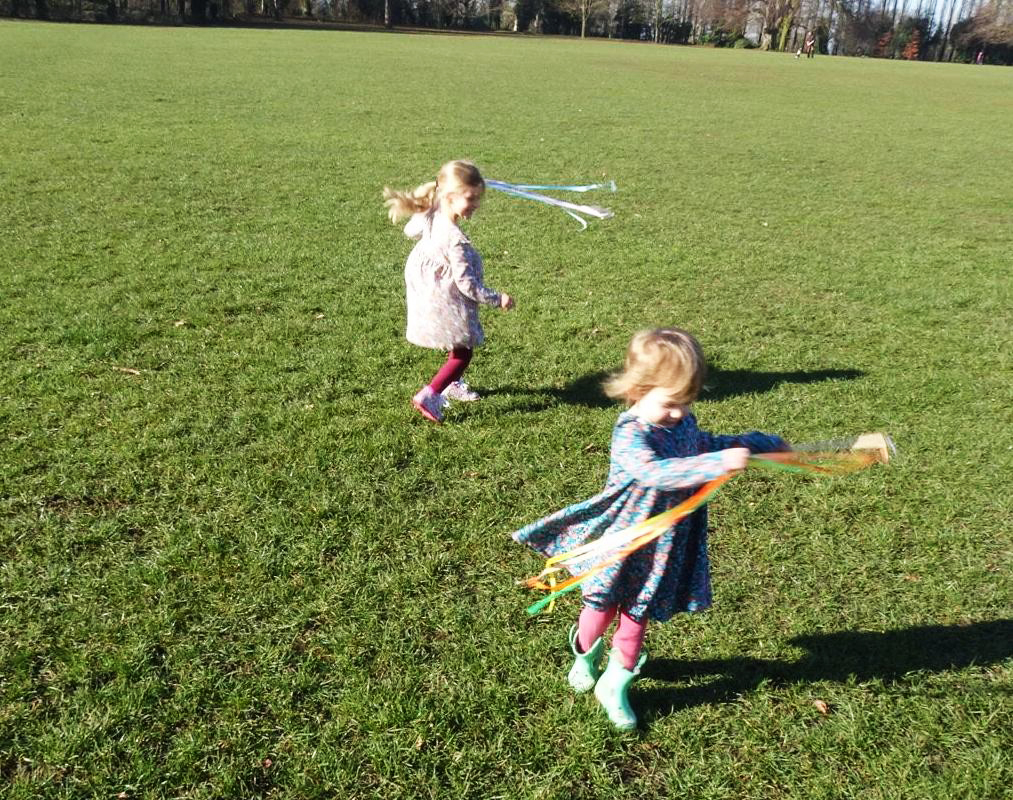
Benefits of Interaction with Music
Cognitive Development:
- Remembering whole songs
- Learning new vocabulary
- Improves listening skills
- Learning about the cause and effect of playing instruments
- Communication skills
- Encouraged pattern recognition
Physical Development:
- Practising fine motor skills through the playing of instruments.
- Gross motor skill development through spatial awareness when dancing, balancing coordination and rhythm.
- Learning about the different ways you can make your body move.
- Builds muscles when dancing to music.
Emotional Development:
- The act of communal singing releases endorphins which can relieve any stress or anxiety a child may suffer from.
- It can change a child’s mood from frustration to serenity.
- Can teach a child about emotional intelligence. They will start to understand how a song can make you feel sad or happy. You may see your child’s dance moves begin to interrupt the music as they get older.
- Encourages creativity and imagination.
We have put together an easy DIY craft you can make your children to encourage them to experience music in a different sensory way. Inspired by Rhythmic Ribbon Gymnasts and their routines we will be creating our own Ribbon Movement Wands.
History Fact!
Gymnastics are thought to go as far back in time as the ancient Egyptians. Ancient Egyptian art show acrobats in human pyramids, in complicated balancing acts with partners, women performing bridges and even dancing with spherical ball like routines you would see in rhythmic gymnastics of today. According to Egyptologists, dance was an important part of Egyptian life and can be seen in ancient murals in pyramids, temples and tombs.
Rhythmic gymnastics can be done not only with ribbons but also with ropes, balls, hoops and clubs. So why not encourage your children to experiment dancing with a variety of accessories!
DIY Ribbon Movement Sticks
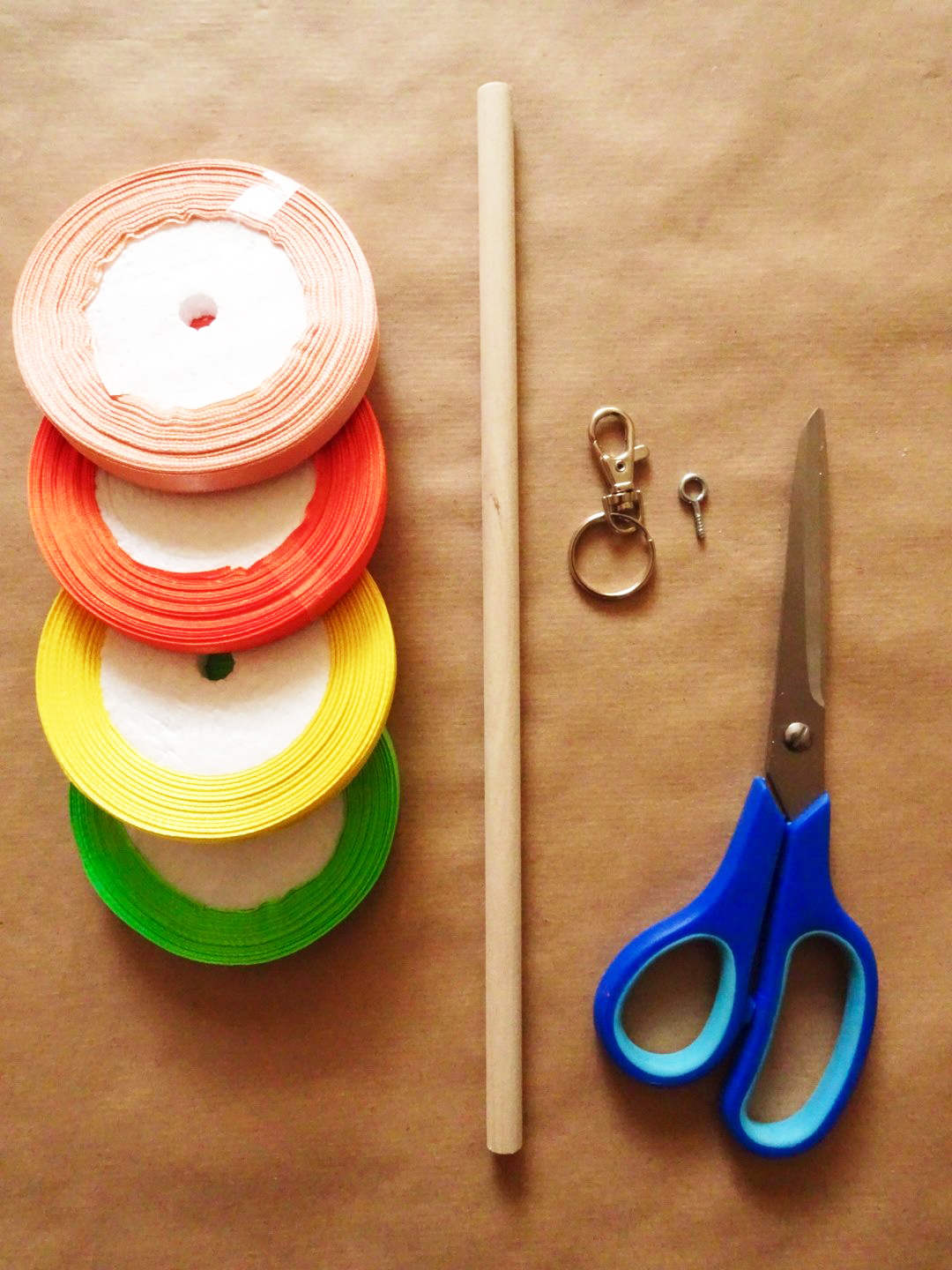
What you will need:
- A wooden dowel
- ribbon, one or multiple colours
- scissors
- swivels
- small eye hook
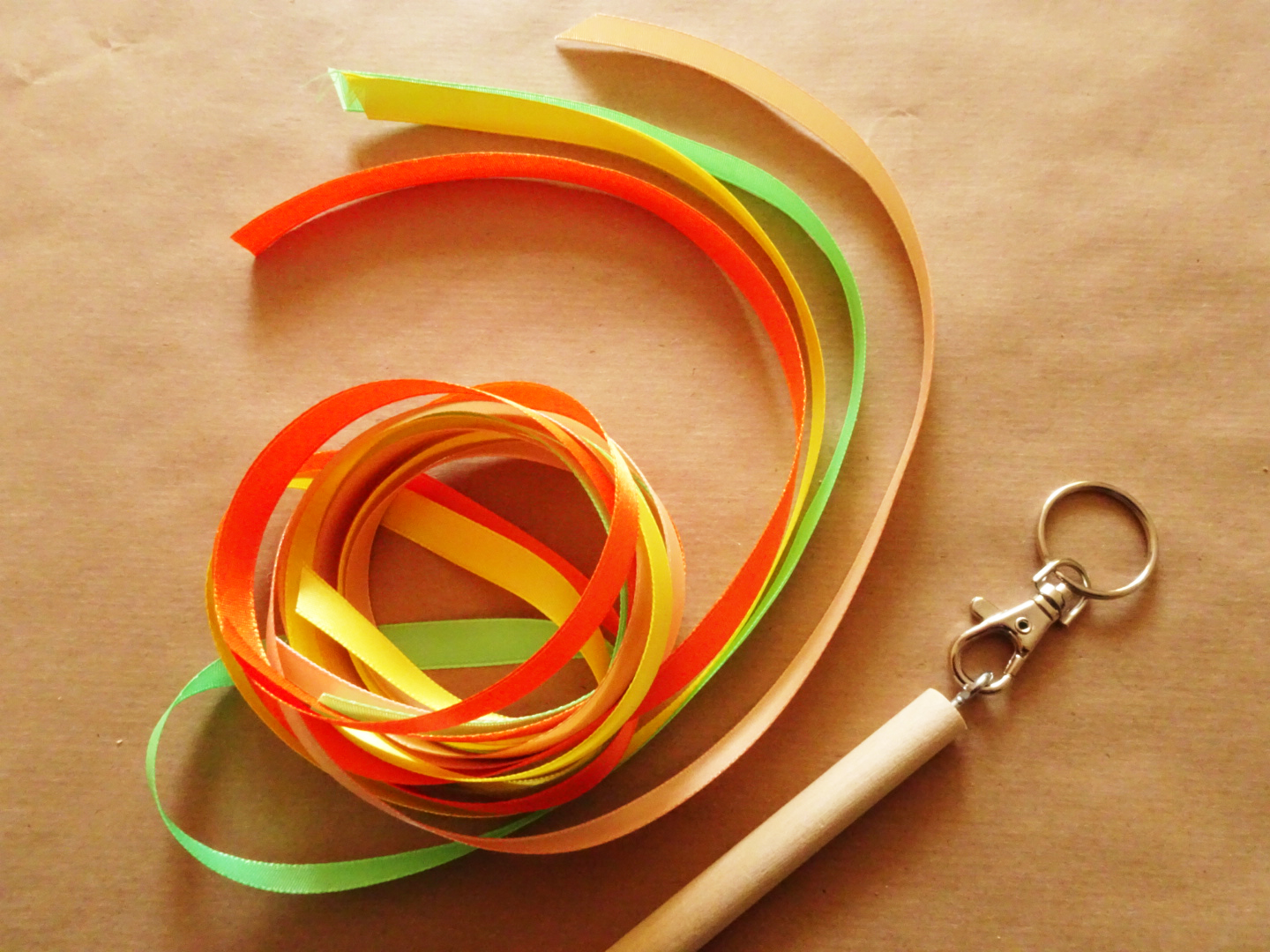
Instructions:
- Just using your hands, place one small eye hook into the middle of the top of your wooden dowel. Apply pressure and slowly turn it, screwing it into the wood.
- When secure, attach your swivel to the eye of your hook.
- Decide on how many ribbons and how long you would like those ribbons to be and cut them. If you have younger children, try not to make them too long as they could be tripping or choking hazards. The older they get and more used to the ribbons, your may try with longer ribbons.
- Tie those ribbons on to the end part of your swivel.
- If you would like, decorate your dowel however you wish. Otherwise, leave plain.
- Turn on your children’s favourite music, hand over the Ribbon Movement Wand and have a ‘Music and Movement’ dance party!
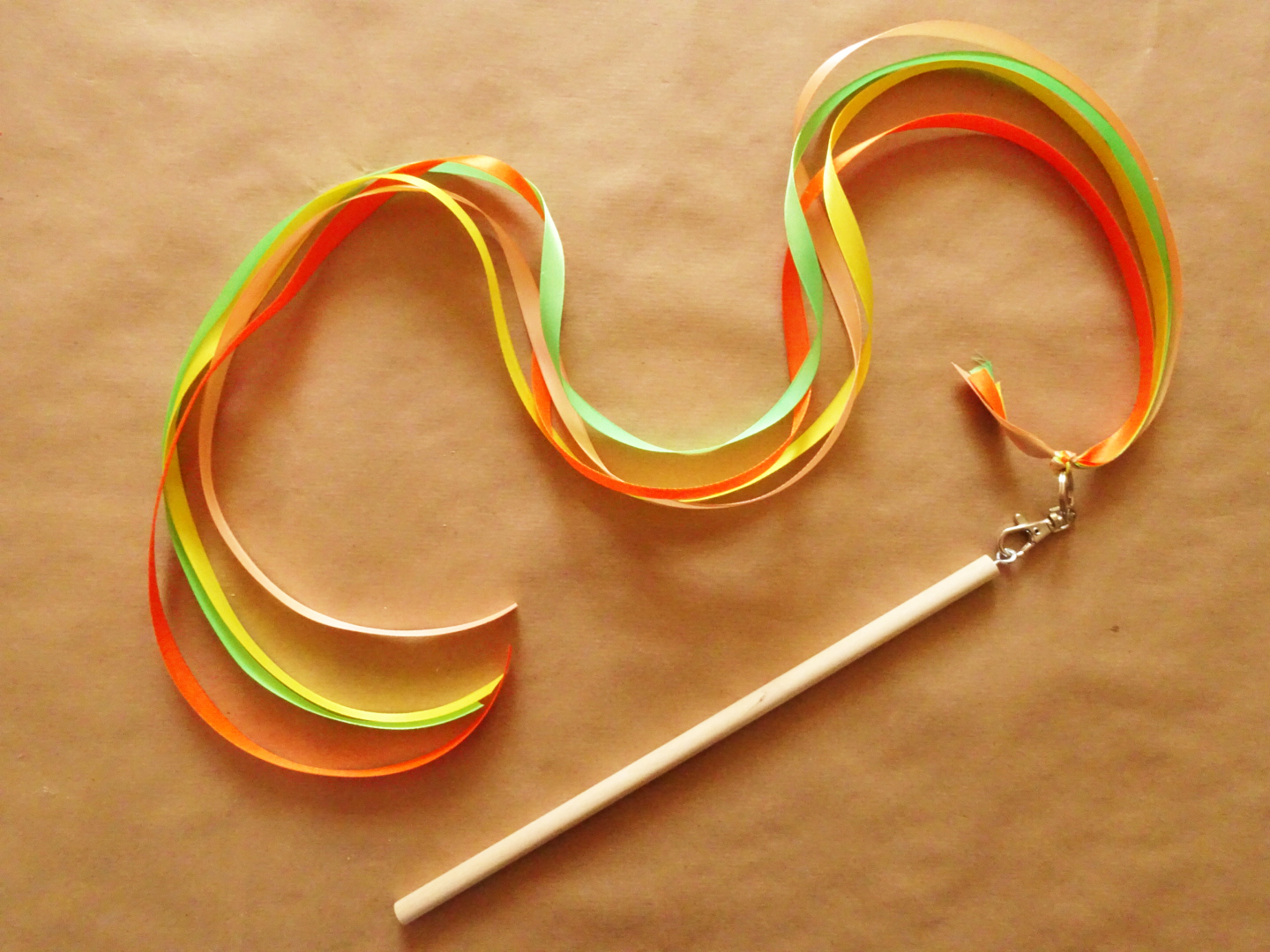
If you have a camera, why not take some pictures of them twirling round. Show them how their movements with the ribbons blur in a photo because they are moving.
Don’t forget to follow us on Twitter, Instagram, Pinterest, and Facebook!
 Contributor
Contributor
Grace Selous Bull is an arts education author and freelance blogger. Her book, ‘Potty About Pots: arts and crafts for home and school’ is aimed at children from 5-12 years old and takes them through a journey of ceramics through time. She is a full time Mummy of two girls, both of whom love being creative, and is married to her husband, Andrew, who does not.
Original content © 2019 Super Simple. Not to be reprinted without express written permission. Terms of Service.

